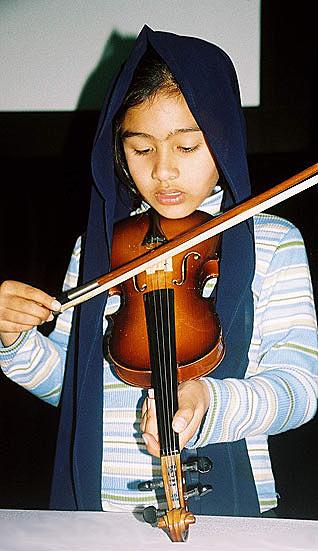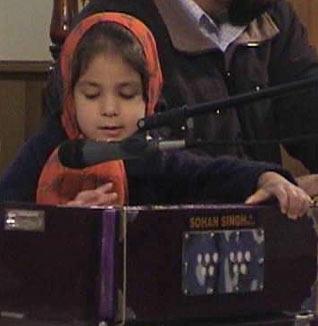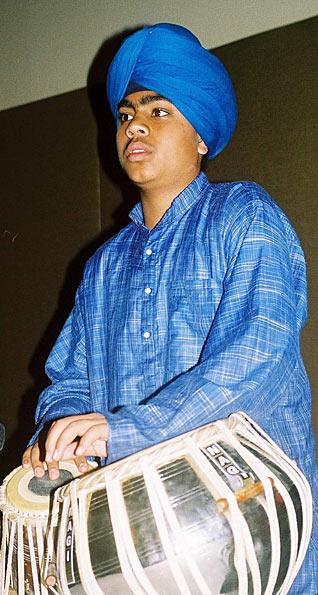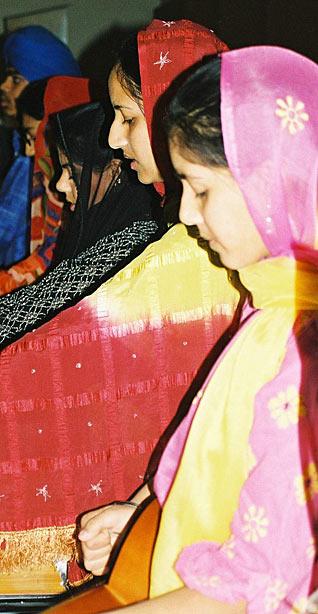Columnists
The Sound of Music
by MANPREET KAUR SINGHIf you want to teach children their language and culture, traditional wisdom says, "Catch ‘em young". And that is what Sikh-Australians are doing by sending their children to Punjabi classes, annual youth camps and organizing regular cultural shows.
But the Sikh Kirtan Parchar Mission Australia (the "Mission"), which believes that religious education plays a vital role in a child's personality development, is encouraging children to take the next step - learn how to do kirtan in their prescribed ragas and by mastering a traditional musical instrument like tabla, harmonium, violin or sitar.
The Mission believes that when children perform at the gurudwara or at other multicultural events, their self-confidence increases by leaps and bounds, they acquire leadership skills which prepares them for a better future and, in the bargain, they learn a whole lot about their religion, traditions and culture.
Judging by the response to this year's 5th Annual Gurbani Singing Competition, parents and participants agree wholeheartedly with the Mission's approach.
Organized in Sydney recently at the Parklea gurudwara, in association with the Australian Sikh Association, scores of children took to the stage during the competition, singing kirtan both alone and in groups. They also played a variety of musical instruments solo as well as in jugalbandi ("concert").
Says Kulbir Singh Malhotra, one of the organizers from the Mission: "This year we had a record number of participants, 133 for Kirtan competition and 29 for the Quiz competition. Apart from Sydney, youth from Melbourne, Canberra, Perth, Newcastle and even Amritsar participated."
Held over two days, the competition adjudged participants on "solo singing", "group singing", "Gurudwara etiquette", "fluency in Punjabi & clear pronunciation" and "organisational management".
"The youngest participant was 18 months old, who sat on the stage and just said ‘satnam waheguru'," recollects Kulbir Singh. "But the most memorable moment for me was to see this little child trying to play the harmonium even though he had to stretch to the fullest, just to reach the other end of the instrument".
Although there were seven entrants under the age of 5, the primary participation came from young teenagers aged between 12 and 17.
Amarjit Singh Chawla, the driving force behind this competition, explains: "Our principal aim is to recognize children for participating in an event like this. Irrespective of the quality of their performance, we want to encourage them to stay involved and keep on learning".
The grandson of the renowned educationist Bhai Hira Singh Ragi, in whose name many scholarships are awarded in India, Amarjit Singh came to Australia in 1989. "I was heartened to hear some children sing kirtan at the gurudwara and felt we must do something to encourage them further."
With the help of sevadars, Gianis and parents, children started learning kirtan formally and in 2001, the first Kirtan singing competition was held. "Children participate readily", says Amarjit Singh, "if they are having fun whilst learning. We have also started cash awards as an added incentive".
Adds Kulbir Singh: "We realized that this was also important for the self-esteem and personality development of children, so we added the public speaking component to it. Children now talk at the open forum, write essays, read poetry, participate in declamations, etc. Although we encourage them to speak in Punjabi, we certainly don't exclude them if they want to use English as the medium. Certainly, they get bonus marks if they speak in Punjabi, and that's another incentive to try and learn their mother-tongue".
18-year-old Jasmeen Kaur won this year's Sikh Link trophy and was adjudged winner of the Sikh Youth Leadership Award 2006 (Music & Culture) for best female performance for the third year in a row.
"Its really great to be recognised this way. I think it's an honour not just for me, but the community that I come from", says Jasmeen. She started singing kirtan from the tender age of six and admits that, by the age of eight or nine, she didn't want to continue anymore because she felt she wasn't good at it.
"But my mother encouraged me to continue and I'm so glad she did. Performing kirtan in front of the sangat has given me so much self-confidence, I feel I can handle challenging situations quite easily. Also, my interpersonal skills have developed manifold as a result." Jasmeen is now studying Commerce Law in Macquarie University, Sydney.
12-year-old Gursagar Singh and 15-year-old Gurkeerat Singh Bulla were chosen joint winners of the Sikh Youth Leadership Award 2006 (Music & Culture) for best male performance.
Padamdeep Singh, Gursagar's proud father, declares: "We wanted our children to associate closely with Guru Granth Sahib, to learn Sikh values and become better individuals. I feel kirtan is the primary medium through which children can understand the message embodied therein, and they also learn ragas and Sikh classical music along the way."
Gursagar, who is also a keen basketball player at school, adds: "I've been learning to play the tabla for quite a few years now and gave a solo performance at the competition. I feel really happy when I learn new shabads and when the meaning is explained to me. I feel like I have learnt something really special."
Whilst in most cases, children are initially nudged by their parents to take classes at the gurudwara, Gurkeerat Singh Bulla's case was unusual.
His mother, Sarabjit Kaur, explains: "We never pushed him much to learn music or kirtan. Its through his own love and devotion that he has learnt it so well. And ultimately, this only works if the child is motivated from within; it can't be sustained, if the love and devotion doesn't come from within the child himself or herself. Like they say, you can only take the horse to the water but you can't make it drink."
Sarabjit recalls: "Even as a little child, Gurkeerat's hands would never stop drumming on the dashboard of the car while we were driving, or on the table at home. When he joined the tabla classes at the gurdwara, Giani-ji said he learnt in three months what other children would take three years to learn".
"He feels at home at the gurdwara," she adds. "While other children are usually playing outside, he doesn't mind sitting on the stage and playing the tabla continuously for three or four hours. The funny thing is, he's normally very fidgety and just can't sit still. But he is a completely different person at the gurdwara".
So, is it hard for school-going children to manage school, extra-curricular activities and gurudwara classes at the same time?
According to soft-spoken Gurkeerat,"I disagree with those people who say they don't have time to go to gurdwara because they have homework or studies. You can easily finish studies at school and, if necessary, at home. In fact, doing seva in the gurdwara and learning over there is as important as school work." He adds," I started out as a tabla player and then people encouraged me to sing as well. In the last four competitions, I played the tabla only, but this year, for the first time, I sang as well. I feel really good when I sing kirtan: it's like something deep inside me feels really calm and peaceful".
So, what is the real value of a ‘kirtan competition'?
22-year-old Japneet Kaur Bindra, has been involved with the Mission competition since its very inception: for the first four years, as a participant, and this year as a coordinator.
According to her, "This event should not be seen as a competition. Rather, it is a learning process. It is a time when children of all ages and from all over Australia come together and sing the words of the Gurus. The children learn about Gurbani, ragas, kirtan, and the traditional way in which they should be performed."
Furthermore, Japneet says, "In this competition, no one is a loser. In fact, everyone is a winner because everyone has something to gain. True, there are awards, prizes and trophies, but this is just a formality and more of an encouragement for the children who spend months tirelessly preparing for the competition. This programme provides a platform for the children to demonstrate their growing talent and potential. It teaches them about self-confidence and self-esteem."
Adds her sister, Luvneet Kaur Bindra, also a finalist for the Sikh Youth Leadership Award 2006: "We are the new Sikh generation of today. It's we who will carry on our tradition, culture and religion into the next generation. An event such as this is important in bringing us back to our roots and reminding us about the essence of Sikhism."
Which perhaps echoes the importance of kirtan as enshrined in the Guru Granth Sahib, which states: kaljug mein kirtan pardhana ("in this dark age, kirtan is of prime importance").
So, whether you do it for religious reasons or for personality development, kirtan seems to be the panacea for the body, mind and soul. 133 Australian Punjabi youngsters were living testimony to this recently in Sydney and will hopefully provide inspiration to many more in the coming years.
Conversation about this article
1: Simranjeet Singh (Mohal, India), March 16, 2007, 2:26 AM.
Thanks for the nice article. It is always good to see our young starting on this journey.
2: Simren Kaur (Sydney, Australia), March 16, 2007, 2:34 AM.
Great to see the joy of Sikhi being shared among all! It makes me so happy!
3: Manjeet Singh (Faridkot, Punjab), September 27, 2007, 3:55 AM.
It's always a delight to see our young starting on this journey.






